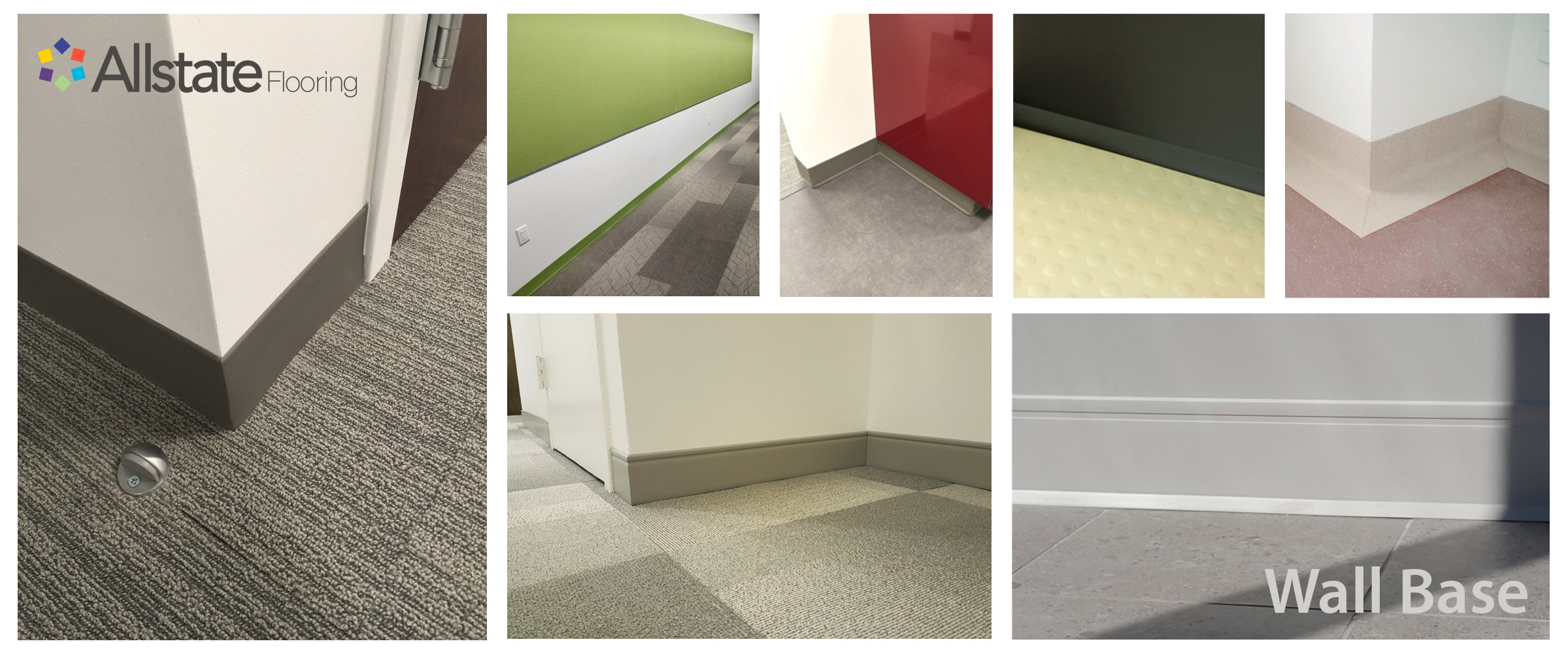Even though wall base is used on most contract interior projects, many do not know the differences between the types of wall base. As a leading manufacturer of rubber wall base, Allstate Rubber will explain the different styles, uses and shapes of wall base.
Cove base is just another name for wall base. We will use cove base as a standard name for the product.
Cove Base is usually made from either rubber or vinyl. Rubber cove base is the preferred product, as it doesn’t shrink and is more scuff resistant. Cove base can be made in seamless rolls of 120LF or in lengths, usually 4’ long. Some new types of cove base are made in either 6’ or 8’ lengths depending on the producer. More on these base shapes in a bit.
If cove base isn’t used on a project then the result would be exposed sheetrock, and an installation that looks odd. Imagine a floor where the tile is not fit to the wall so the subfloor and bottom of the wall are exposed. Not a very comforting thought or visual.
Gauge and finish: The traditional base is ⅛” thick but according to ASTM standards can be a bit thinner. Always examine your samples to see if you are getting a true ⅛” gauge product. The thicker gauge helps to hide wall imperfections. Some cove base comes with a glossy or semi-gloss finish, others come with a matte finish. The matte finish does not draw attention to the base and helps camouflage wavy walls.
Color: Cove base can be made in pretty much any color you require (with minimum requirements) but most producers offer a range for contract use. After all, a bright pink base or electric blue aren’t the most practical colors. Many designers will match a cove base color either to the paint used on the wall or the metal door frame. Allstate offers 55 colors, which includes 7 whites, 3 blacks and different colors to match metal door frames.
Size/Height: The standard heights of cove base are 2.5”, 4” & 6”. 2.5” is usually used in corporate settings,
4 ” is the most popular height and 6 ” is primarily used for health care and K-12 installations. Other heights are also available but are limited by height and minimum order requirements.
Format: The two main styles of cove base are,
1. Cove base, that is a base w/a toe or lip at the bottom of the shape. This shape has primarily been used on hard surface floors. The toe helps cover up the perimeter of the installation as most tile is installed w/a small gap between the tile and the wall. These days, many designers use cove base with carpet as well. The carpet is installed to the wall then the base is installed over the carpet.
2. No toe aka carpet base or straight base. No toe base is just what it sounds like, a base without the toe or lip at the bottom. 99% of the time is it used with broadloom or carpet tile. The base is installed first, then the carpet is installed. This way the carpet butts up against the base for a clean sleek visual.
Millwork Type base:
Millwork type base is a newer style of base that has a texture or engraved surface. It is usually made to resemble wood moldings, hence the term millwork, or in the case of Allstate Rubber WoodWerk™. These shapes range from ¼”to ¾” thick depending on the brand and shape. The millwork product has found great success in hospitality and now many corporate and healthcare designers are using them.
Cove base is an integral part of most designs. Allstate rubber offers a plethora of choices. If you have questions that are not addressed here, please feel free to contact us either via our website www.allstaterubber.com or email, sales@allstaterubber.com

